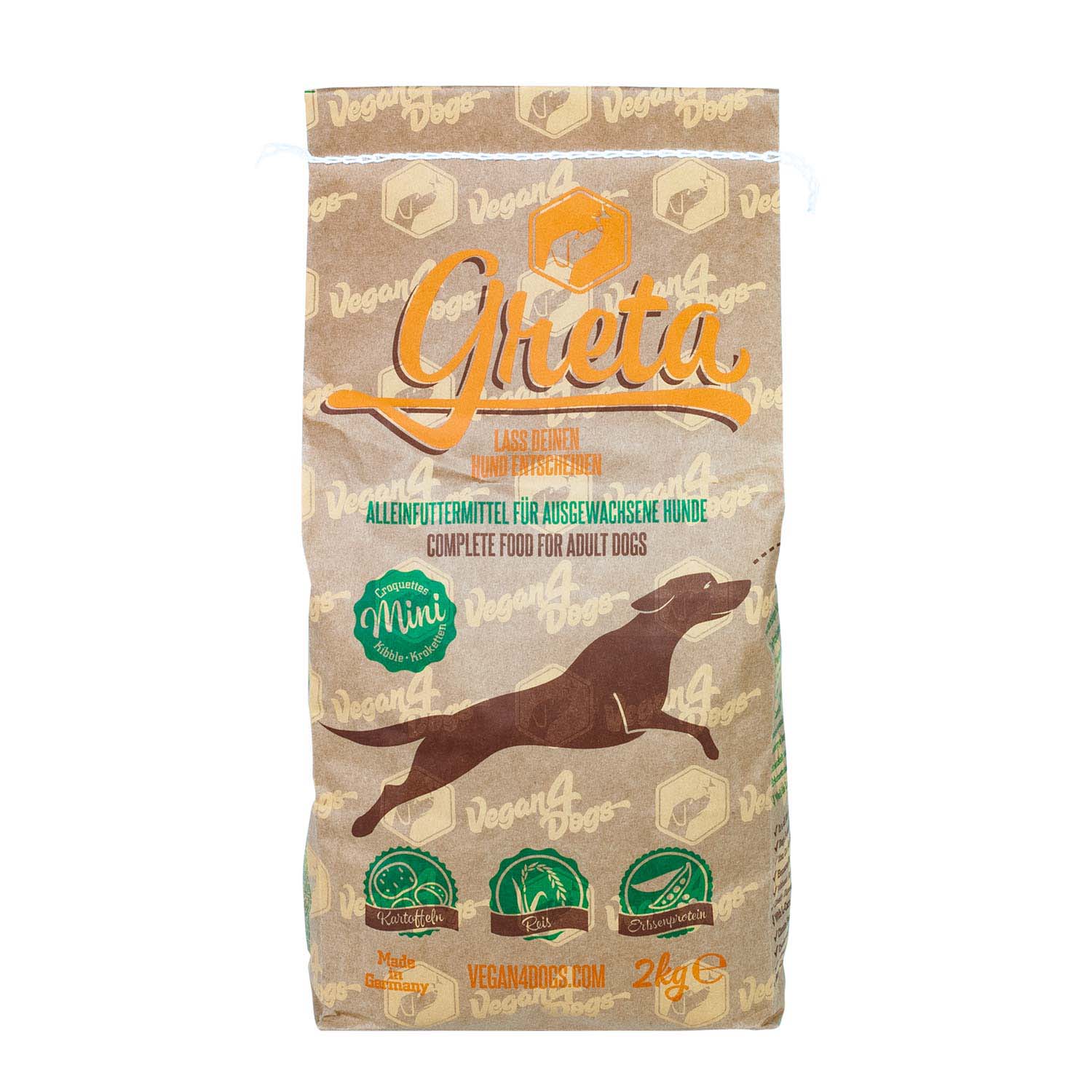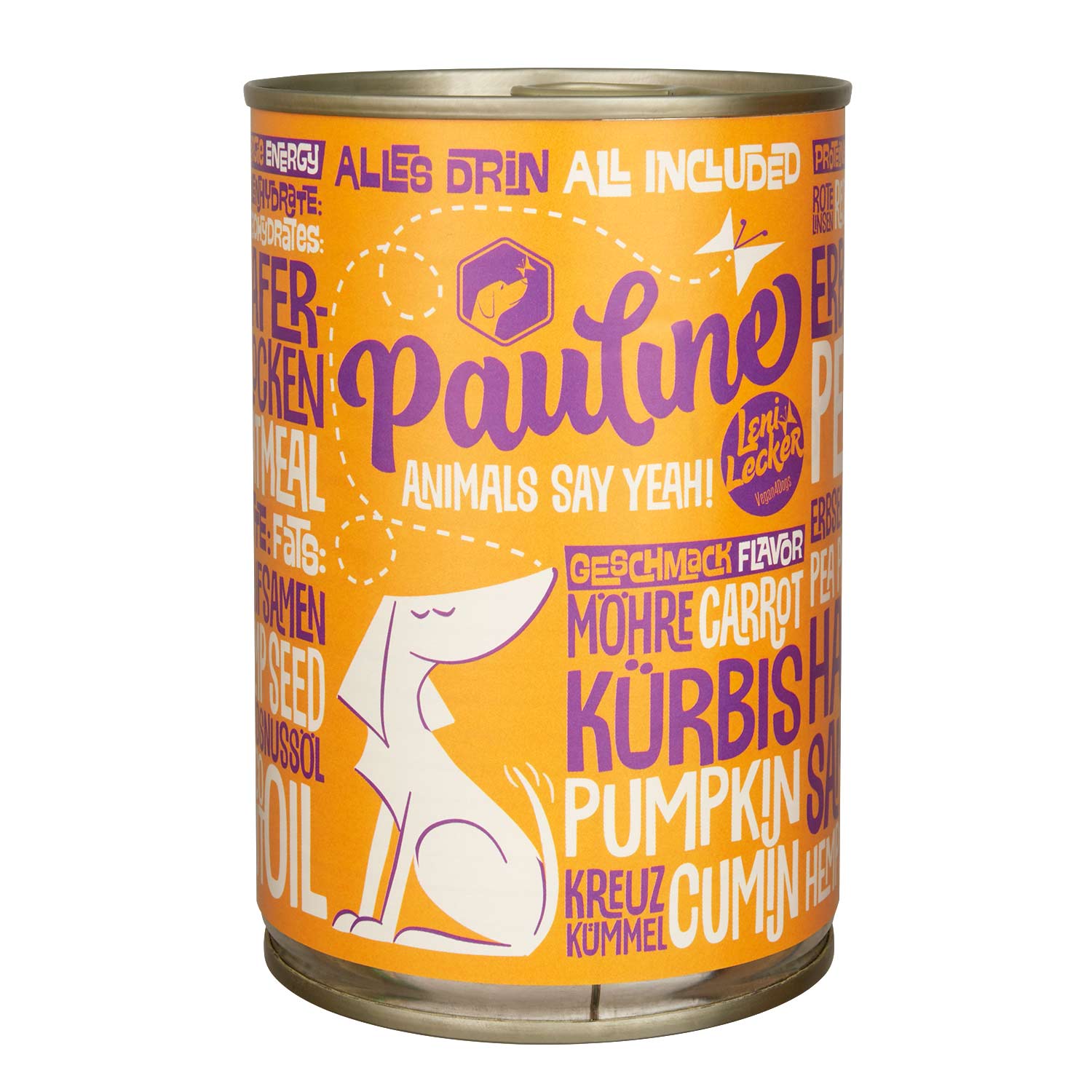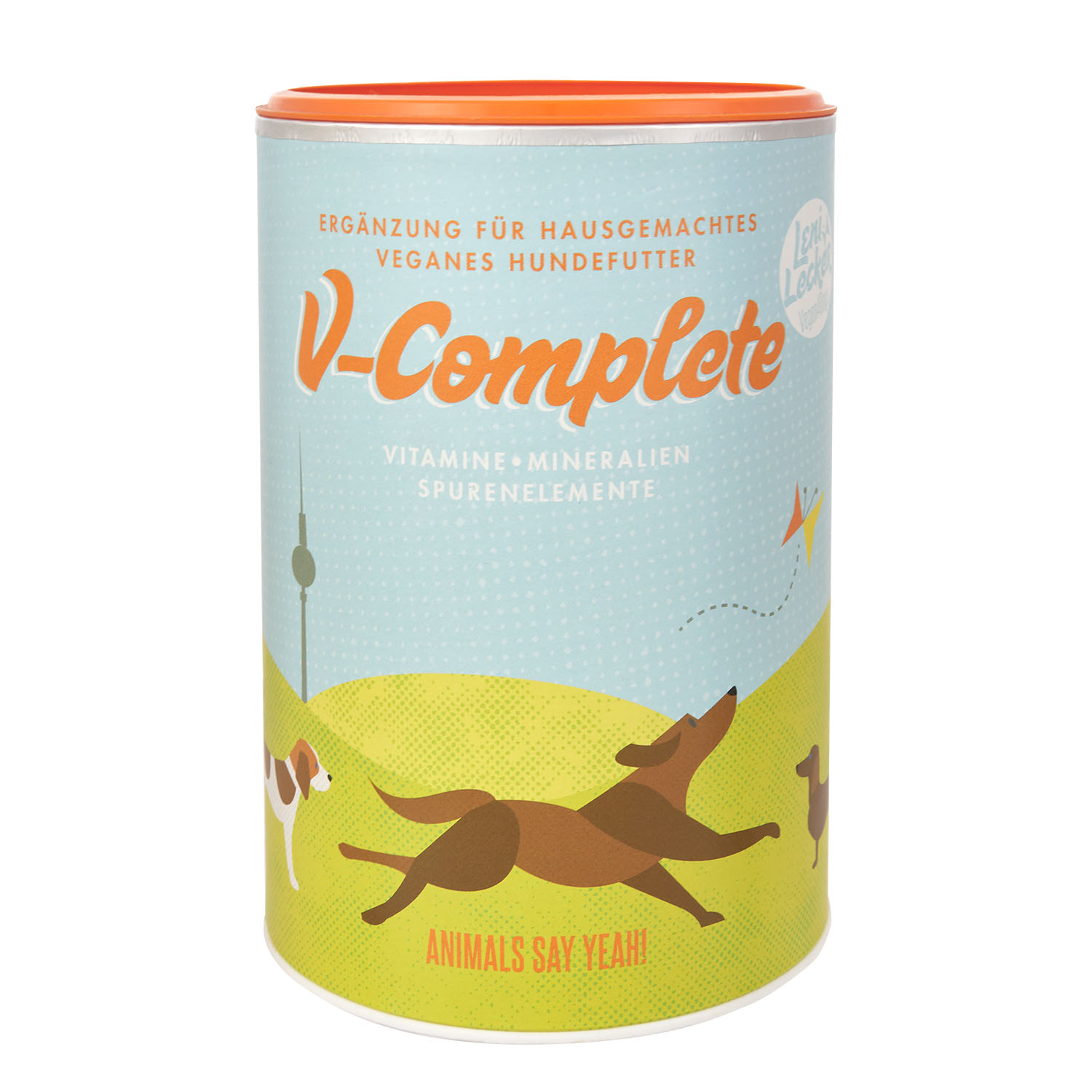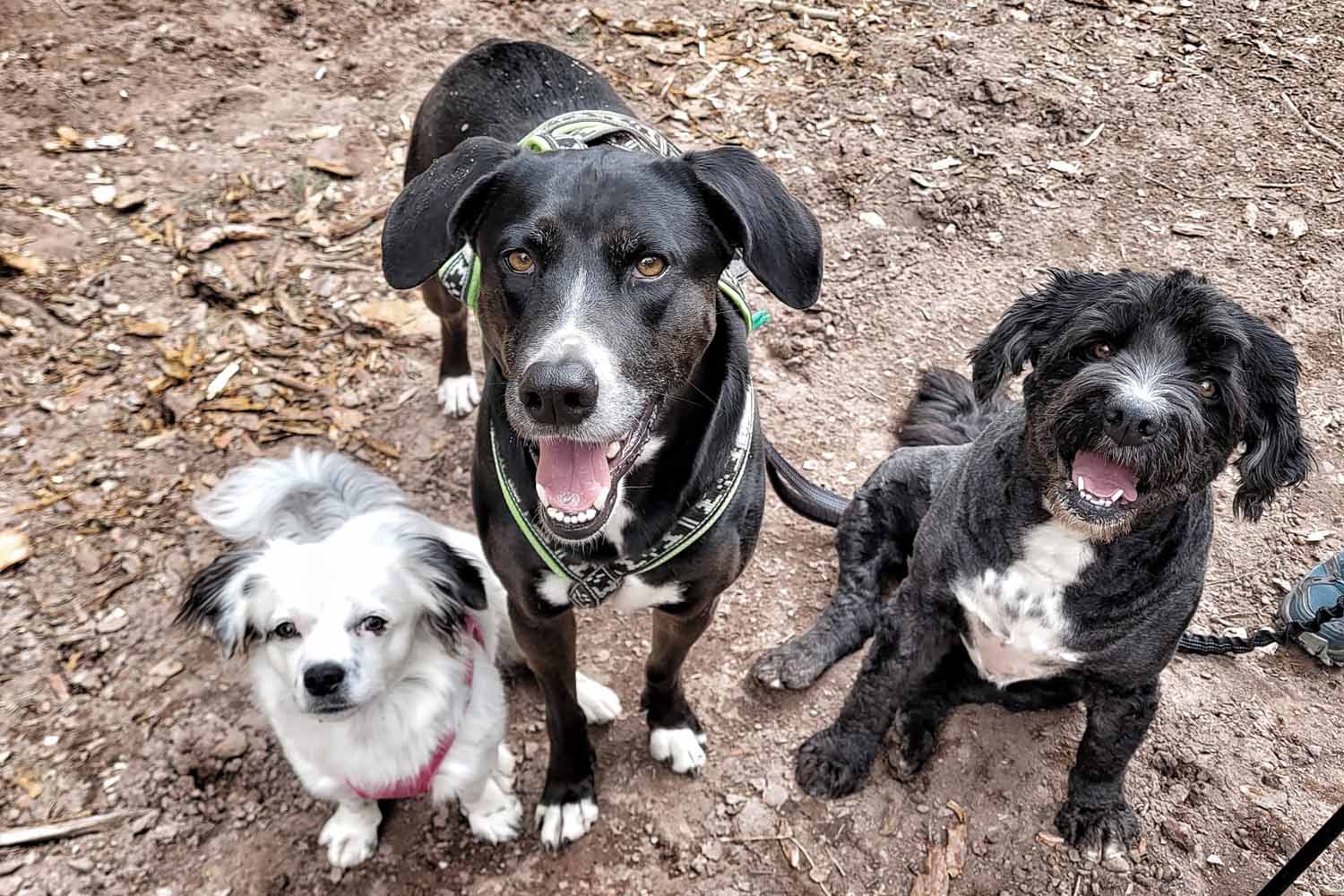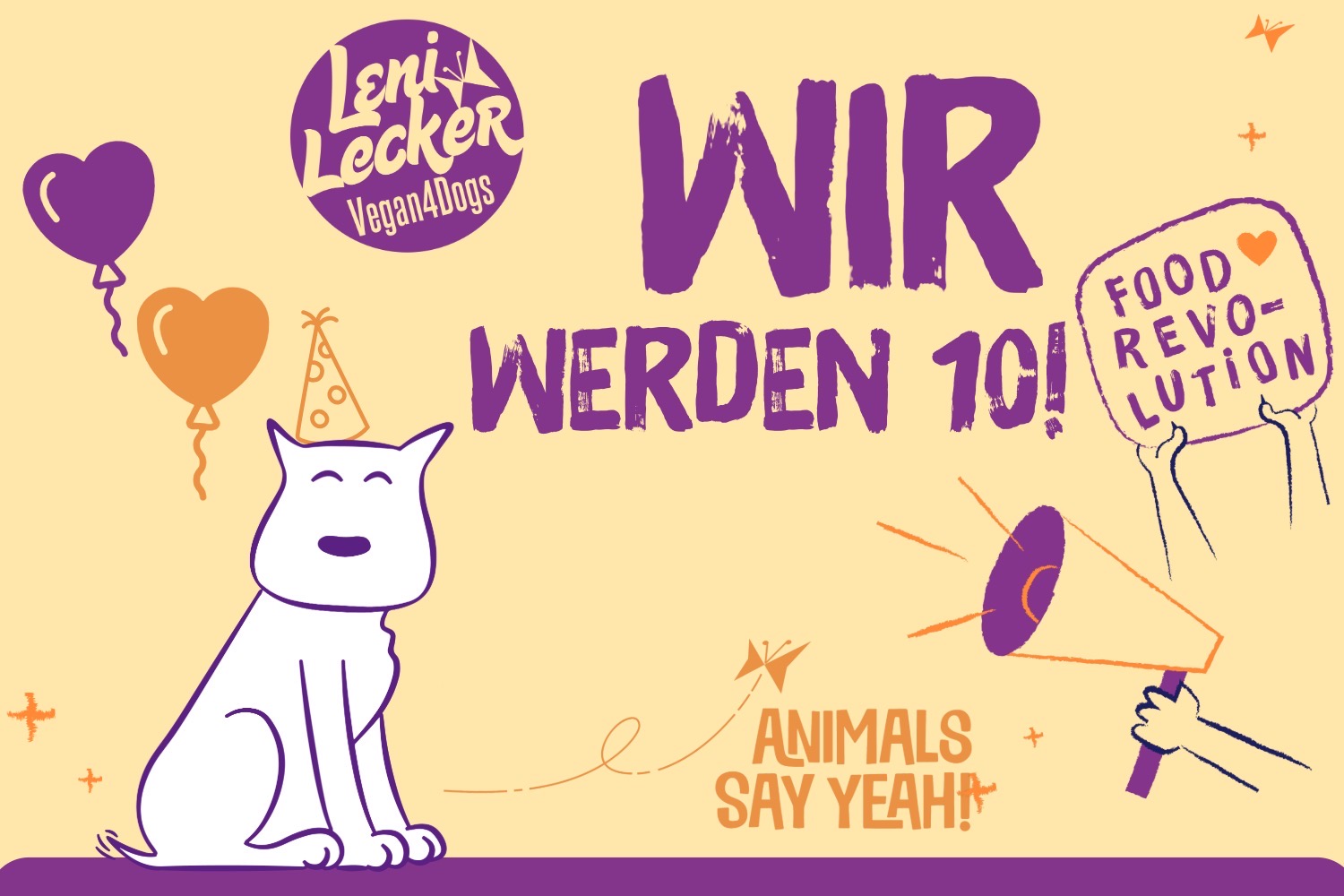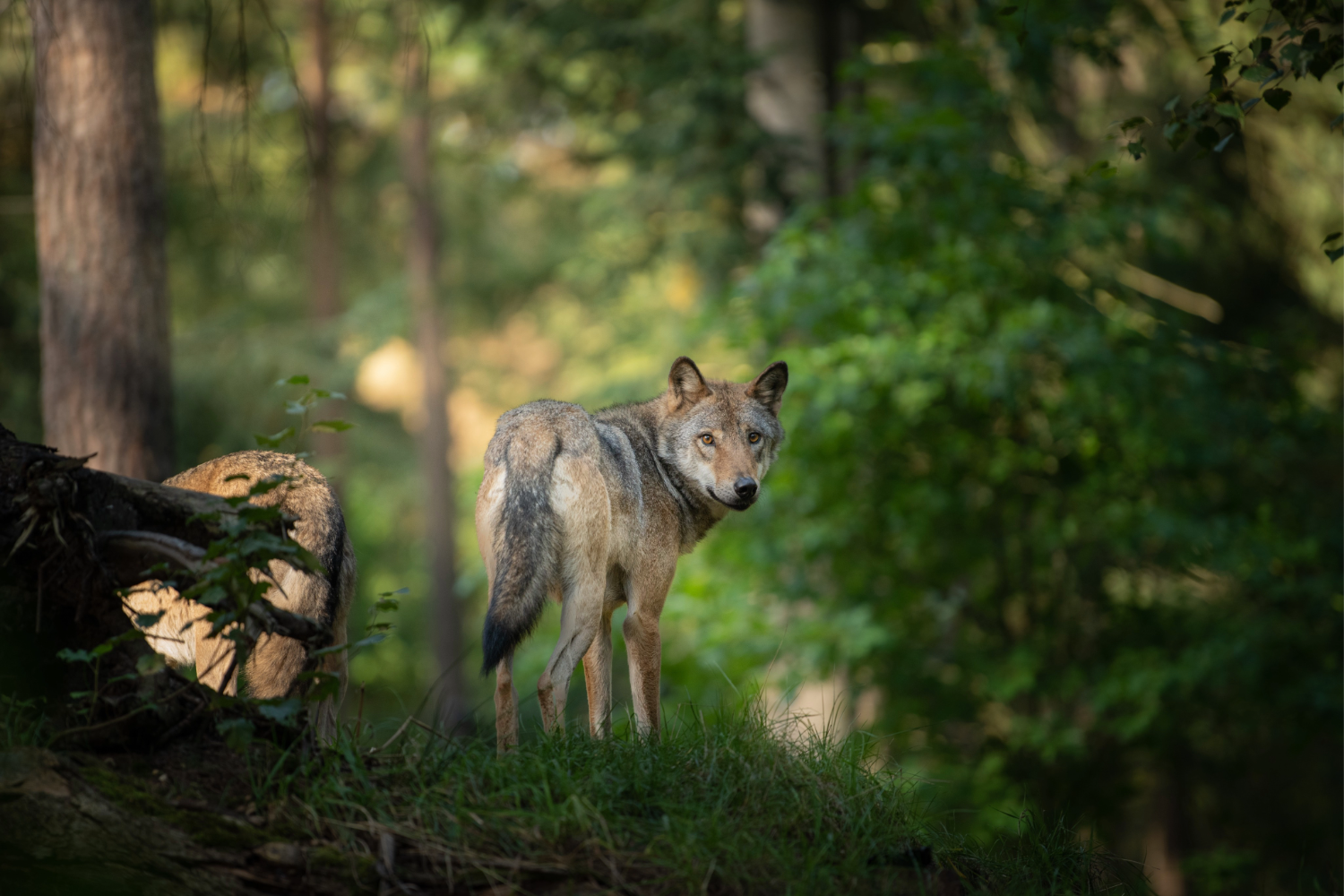
The Dog a Wolf! Or maybe Not?
“A vegan diet is not species-appropriate for dogs because dogs are descended from wolves.” Who hasn’t heard this statement before? In this blog post, we want to take a closer look why this assumption is still so firmly rooted in our minds and find out how much wolf is actually left in our dogs.
Table of Contents
A History of Domestication - How the Wolf turned into a Dog
Differences and Similarities between Wolves and Dogs
What do Dogs and Wolves have in common?
What are the Differences between Wolves and Dogs?
Do Dogs Need Meat?
The Life of a Modern Domestic Dog
Something to reflect on: Romanticization of Dogs and Wolves as Dangerous Animals
Conclusion
Resources
A History of Domestication - How the Wolf turned into a Dog
Before we explore how much wolf is still in our dogs, let's travel back several millennia. The domestication (gradual transformation of wild animals into companion animals or of wild plants into cultivated plants by humans1) of dogs is one of the oldest relationships between humans and animals2.
It is estimated that humans have been living with dogs for around 15,000 to 40,000 years. The process probably began when wolves approached human settlements and lived off human waste2. Wolves that were less shy began to trust humans and gradually became loyal companions.
As meat used to be considered a luxury good2 and was also only available to humans to a limited extent, dogs were mainly fed on plant-based food scraps4. Through long-term adaptation to life with humans, they developed from pure carnivores to omnivores.
Dogs are therefore able to produce amylase - a digestive enzyme that breaks down long starch chains (polysaccharides) from plant foods into shorter sugar building blocks such as maltose. This enables them to utilize starchy foods such as bread, rice, potatoes or cereal products much better than their wild ancestors5.
Differences and Similarities between Wolves and Dogs
According to the history of domestication, dogs and wolves belong to the same genus and are therefore genetically very closely related6. This close relationship shows some common behaviors, but there are also some crucial characteristics in which they differ.
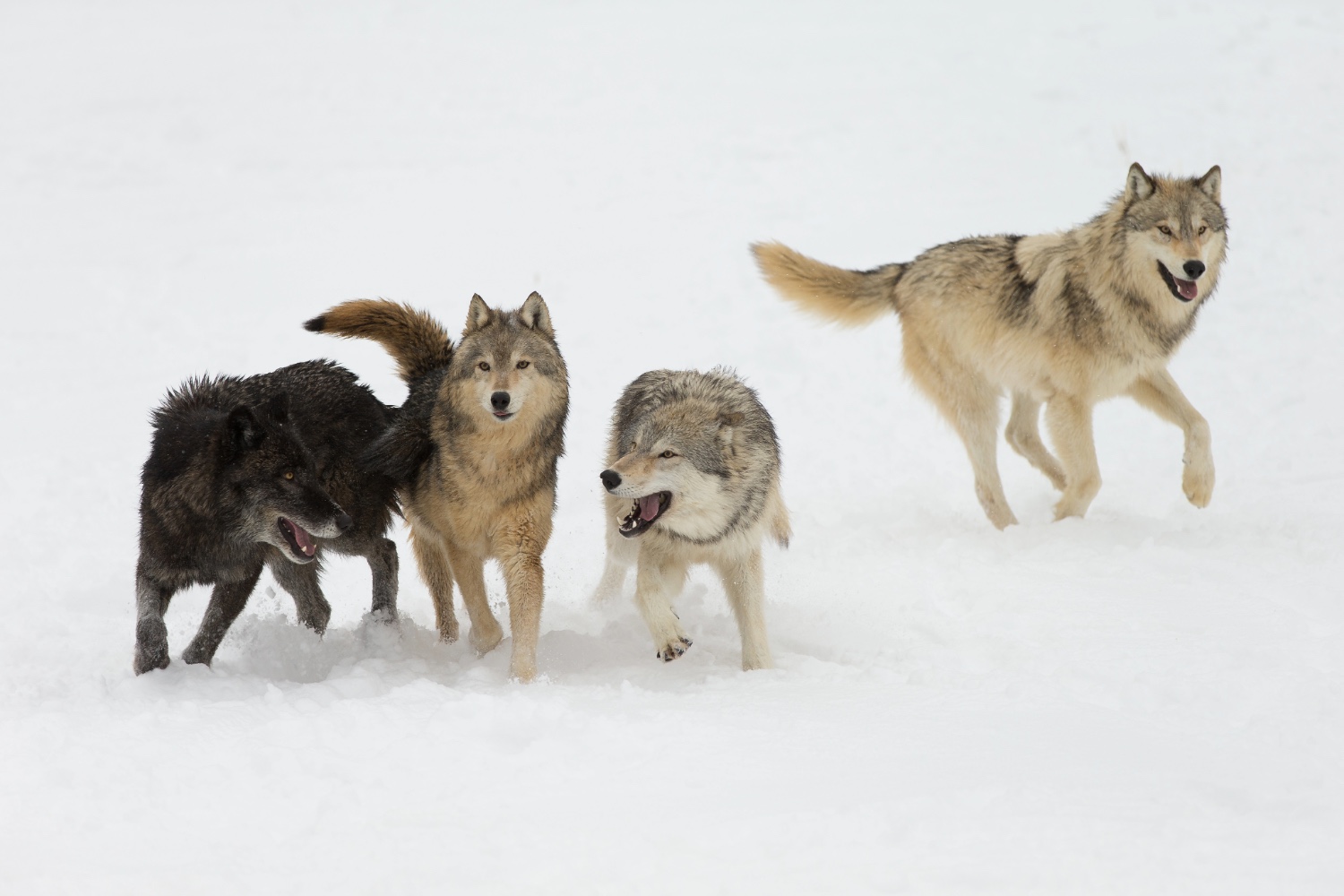
What do Dogs and Wolves have in common?
Social Structure
Both wolves and dogs are social animals and live in packs or family groups. The pack structure promotes cooperation and communication, which is important for wolves when hunting or, in the case of dogs that live in the household as family members, for interaction with humans.
Hunting Instinct
Wolves and dogs naturally have a hunting instinct, which is less pronounced in some dogs or has been trained away. In some breeds, such as the terrier, hunting behavior has been particularly intensively developed through breeding. Domesticated dogs also often show alternative hunting behavior, such as chasing movements or tugging at toys7,8,9
Communication
Dogs and wolves communicate through body language, vocalizations and gestures. Wolves howl to call their pack members, and dogs also bark and can sometimes howl like a wolf to call their humans or other dogs. Both animals use facial expressions, body posture and vocalizations to communicate their mood10.
Nutrition & Digestive System
The differences in the anatomy and functions of the bodies of wolves and dogs can be seen, for example, in digestion. Dogs can utilize starch from plant foods more efficiently than wolves, which explains their adaptation to a wider range of food sources5,7,8.
Wolves are carnivores and their digestive system is specialized in the breakdown of animal proteins and fats. Dogs, on the other hand, have adapted to a varied diet and can also digest starch from plant foods, as they are now able to produce amylase, the enzyme that digests starch5.
This ability is an evolutionary advantage, as meat was once considered a luxury and dogs were mainly fed on plant-based food waste. This allows dogs to live in human households where foods such as grains and vegetables are often included in their diet.
Comparison of Dog and Wolf Teeth
One striking difference between dogs and wolves is the structure of their teeth. While the wolf has a stronger set of teeth with sharper teeth for grinding and tearing meat, the dog's teeth are less robust overall. In the diagram below, it shows that the orbital angle/eye angle (e) is flatter in wolves than in dogs.
This flatter angle is directly related to the stronger chewing muscles required by predators such as wolves to efficiently crush meat and bones. In the course of domestication, dogs have adapted to a more varied diet, which is also visible in the anatomy of their teeth11.
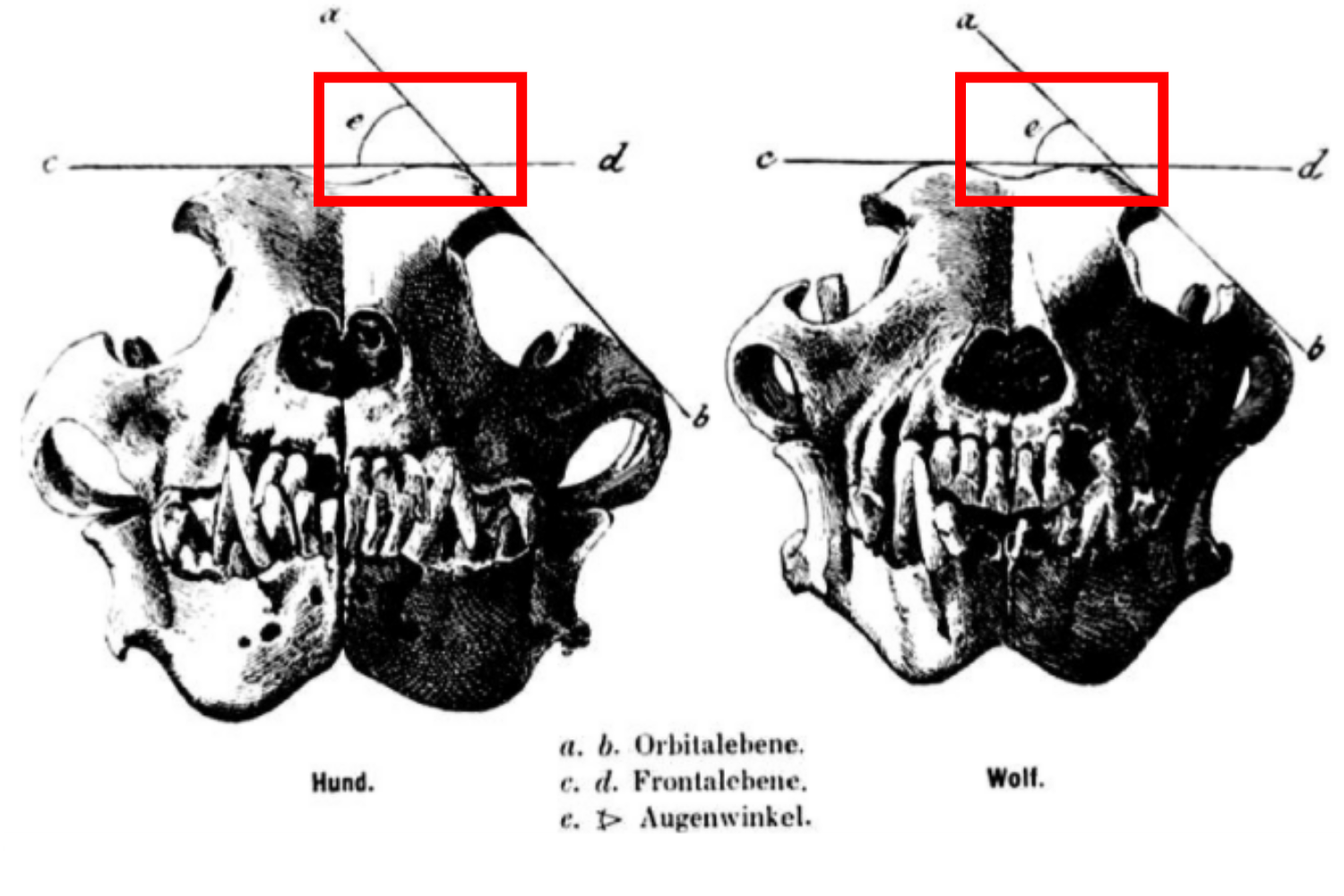
Studer, Theophil (1901): Abhandlungen der Schweizerischen Paläontologischen Gesellschaft, Vol. 28, pp. 1–137. Basel: Swiss Palaeontological Society19
The systematic breeding of various dog breeds has led to significant changes in the structure of the skull and the position of the teeth - particularly visible in breeds with a very shortened muzzle. These so-called brachycephalic breeds (from brachy = short, cephalus = head) are characterized by a broad, short skull. Typical examples include the Pug, the French Bulldog and the Boxer.
In these breeds, the skull is so severely shortened that certain anatomical structures, such as the parietal crest - a ridge of bone at the back of the head to which powerful chewing muscles attach in wild canids such as wolves - disappear completely. This means that if these muscles can no longer attach there, this muscle strength is no longer available. This illustrates the extent to which breeding has changed the original shape of the skull, making it clear just how different wolves and dogs are today.
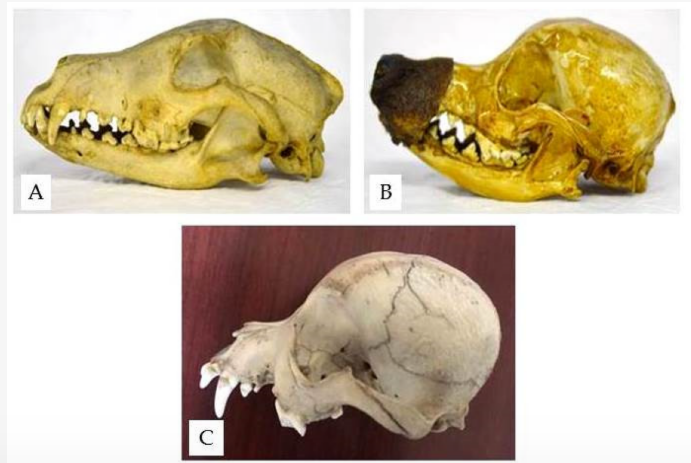
Coli, N., Prinetto, D. & Giannessi, E. (2023). Anatomia, 2(1), 78–8720
Coat Texture and Body Structure
The texture of wolves' coats is generally denser, covered with undercoat and better adapted to cold climates. Dogs such as the Siberian Husky or the Alaskan Malamute are considered to be the breeds that look most like wolves12. As a result of breeding, there are some breeds such as the Chihuahua, Pug or Poodle, which differ greatly from the original appearance of wolves.
Behavior and the Ability to Adapt
Wolves are wild animals that live in natural habitats such as forests, steppes or mountains and are dependent on self-sufficiency. As territorial animals, they claim fixed territories, which they defend against other wolves. Hunting usually takes place in a family group - the so-called pack - which is organized by a clear social structure with a leading figure (alpha animal, usually the parent). This pack structure ensures survival through cooperation in hunting, rearing the young and defending the territory13.
Domestic dogs, on the other hand, have adapted over the millennia by living together with humans. Unlike wolves, they no longer actively hunt for food, as they receive their food from humans. Pack behavior is also less pronounced in domestic dogs, especially when kept alone. Nevertheless, dogs live in social structures with hierarchies. In a human environment, humans often assume the role of social leader by setting rules and providing food, protection and orientation - functions that are assumed by dominant animals in wolf packs14.
However, next to domestic dogs, there are also dogs that live without human care: so-called street dogs or free-roaming dogs. Like wild dogs, these dogs have to find food independently, protect themselves from danger and establish social structures within their groups. Street dogs are able to develop free social hierarchies based on cooperation and competition in the search for food. Adaptation to a life without human care depends heavily on environmental conditions, food availability and human tolerance. Some street dogs live as loners, others in small packs where flexible social structures are essential for survival. These groupings are usually temporary - some only for hours or days (e.g. when sharing food sources), others for weeks or months (e.g. during mating season or puppy rearing). Dogs form small groups near human activities during the day, but tend to live as loners or in loose sleeping communities at night15,21.
This adaptability makes dogs extremely flexible companions that can adjust to a wide variety of living conditions. Today, they fulfill many different roles: as farm dogs, family dogs, or in specialized functions such as guide dogs, assistance dogs, police dogs, or rescue dogs.
In contrast, undomesticated canids such as wolves, dingoes, and African wild dogs continue to depend on specific natural habitats and ecological niches. They require extensive territories and stable environmental conditions in order to survive15.
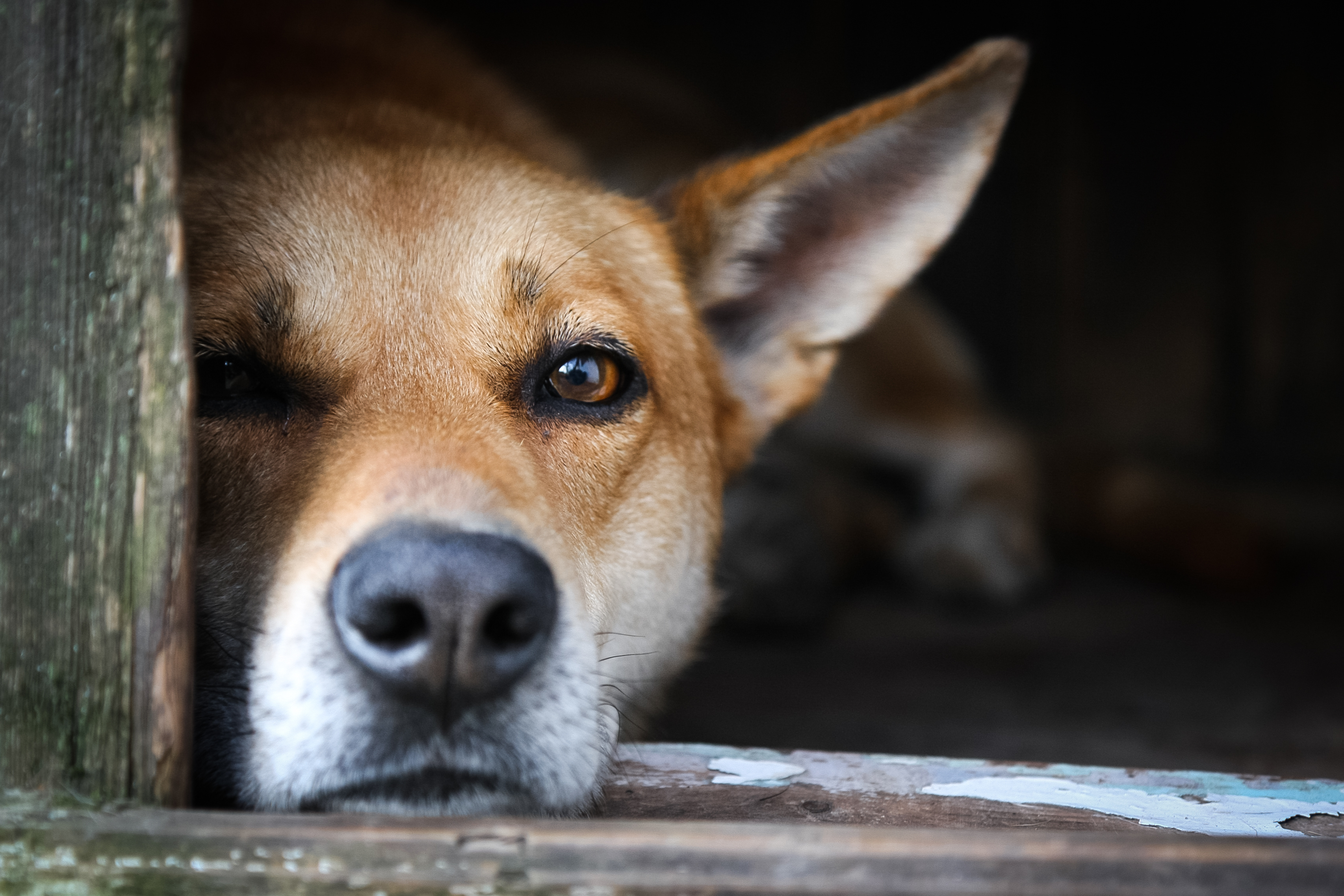
Life Expectancy
Wolves can live up to 14 years in the wild. In reality, however, many live significantly shorter lives because they are exposed to numerous dangers such as disease, food shortages, or persecution by humans16.
Domestic dogs, on the other hand, live under human protection and have an average life expectancy of around 10 to 15 years, depending on breed, size, and health care. Some dogs can even reach an age of 18 years or more.
Breed Concerns
The diversity of dog breeds is overwhelming, but also problematic. The breeding process, which is focused on human preferences and needs, has often resulted in animals with unnatural characteristics that are classified as cruel breeds, such as short-winded dogs with flat snouts like pugs and French bulldogs, or with deformities caused by legs that are too short and backs that are too long in dachshunds and corgis, excessive skin, as in Shar-Peis, too much or too little fur, and breeds that are too large or too small. These are breeds that would not be able to survive in the wild and are dependent on human care.
Certain breeds were not bred primarily for functional reasons, but because people find them particularly attractive or unusual and because their care needs appeal to the desire to nurture. For some humans, it is precisely this dependence that has emotional value, as it offers them the opportunity to take on responsibility. As Prof. Dr. Achim Gruber, director of the Institute for Animal Pathology at the Free University of Berlin, writes in his book Geschundene Gefährten - Über Irrwege in der Rassezucht und unsere Verantwortung für Hund und Katze (Abused Companions - On the Misguided Paths of Breeding and Our Responsibility for Dogs and Cats), parallels can be drawn here with Münchhausen syndrome by proxy: As with this mental disorder, suffering—in this case due to exaggerated breeding characteristics—becomes a reason for care, the necessity of which can be unconsciously maintained in order to receive emotional validation or recognition 17.
Breeds that most closely resemble wolves in appearance are the Malamute and the Siberian Husky. However, due to their specific breeding history, these dogs also have needs and behaviors that are not always compatible with modern life and are considered demanding due to their excessive urge to move and strong assertiveness. On the one hand, some people want to feed their dogs like wolves, but on the other hand, dogs that are too similar to wolves in nature are too demanding.
A similar picture can be seen with cats, with a tendency toward unusual breeds that are predominantly aesthetic. Here, too, cats display undesirable behavior for humans when they pursue their natural instincts, such as hunting and bringing their prey home.
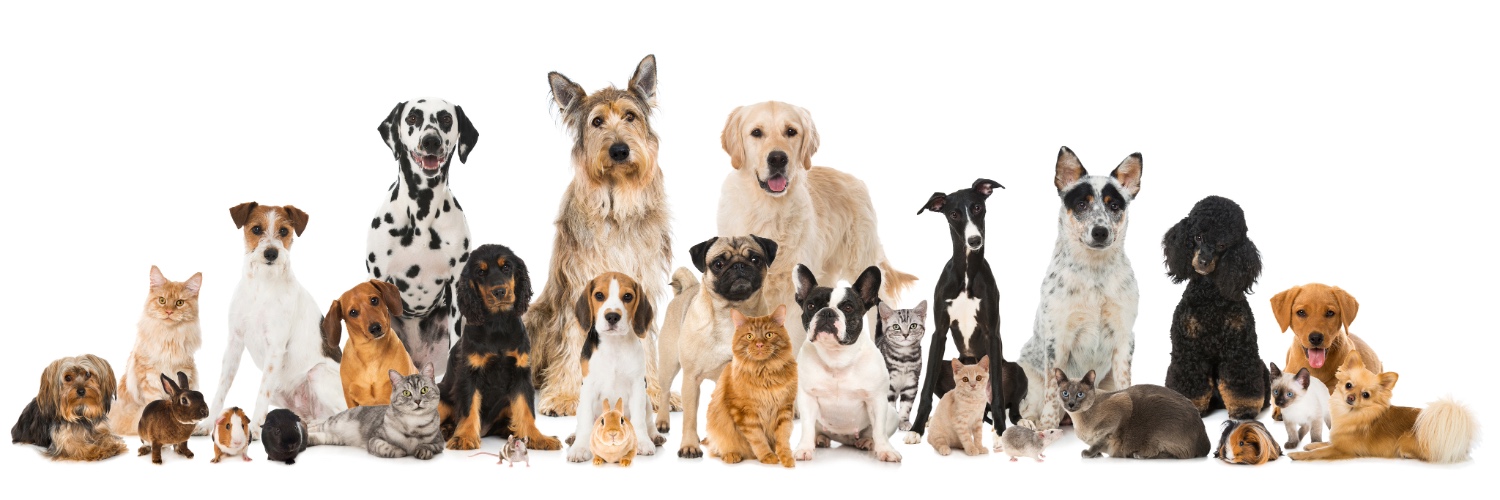
Do Dogs Need Meat?
In the wild, wolves depend on hunting prey. In contrast, a key advantage of domesticated dogs is their ability to digest plant-based food. Since meat was not a primary food source for humans, dogs living alongside them were rarely fed meat and adapted to the plant-rich diet of human society. This is why dogs can also be fed a vegan diet.
It is often claimed that native breeds such as the above-mentioned huskies or malamutes are unable to produce amylase and therefore cannot digest starch. They are said to be dependent on animal protein and fat as energy sources.
Contrary to this assumption is a study published by the University of Cambridge, which investigated how different types of feed affect the performance of racing sled dogs. The results suggest that an exclusively meat-based diet is not essential for maintaining performance. Rather, it was found that a balanced meat-free diet containing fats and proteins as well as plant-based carbohydrates such as soy flour as a protein source can also meet the high energy requirements of these animals and enable them to perform at their best. The study does not explicitly mention a vegan diet, but it does refer to a plant-based and meat-free diet, which is why we assume that the dogs were fed a vegan diet. However, it is important to note that the study was only conducted over a limited period of 16 weeks during intensive racing18.
In addition, there are dogs that cannot tolerate animal proteins due to allergies and intolerances. It is often recommended to feed so-called hypoallergenic protein sources such as horse, kangaroo, crocodile, buffalo, and ostrich, which are not even part of the natural food supply. Even these exotic meats often do not improve the symptoms. From the many experiences of our customers, we know that a vegan diet can be a solution.
Did your dog try vegan food already, but didn't like it?
Tastes do vary. It doesn't necessarily mean that if your dog doesn't like one type of vegan food, they can't be vegan. Maybe they'll like another brand? Or perhaps the transition period was too short? There could be many reasons for this. Find out more in our post on changing your dog's diet.
The Life of a Modern Domestic Dog
Dogs, which live in most households today, differ from their wolf ancestors in many ways. The dogs' life is strongly influenced by humans. Dogs are often kept alone and have to follow human rules. They live a life determined by others, with fixed walking and feeding times, and are expected to get along with all humans and other dogs.
Dogs that demand peace and quiet as well as distance are often labeled as socially unacceptable, even though we recognize this behavior in ourselves. Our task as pack mates is to recognize and protect these needs in order to work together as a team.

Something to reflect on: Romanticization of Dogs and Wolves as Dangerous Animals
While dogs are romanticized as loyal companions and friends, wolves are often portrayed in the media as dangerous and threatening.
There are many reasons for the romanticization of dogs, both cultural and psychological. In many cultures, dogs are symbols of loyalty, love, and protection. This idealization is reinforced by the media and stories such as “Lassie” or “Buddy.” In addition, there are various social media accounts where animals are marketed and pampered as “brand ambassadors,” known as petfluencers.
At the same time, the wolf is a wild, unpredictable animal that is portrayed as a threat in the media and fairy tales such as The Seven Little Goats or Little Red Riding Hood.
Conclusion
And yet we want to feed the Dog like a Wolf?
The relationship between humans and dogs is deeply rooted, but the question arises as to whether we really still live in harmony with the natural needs of animals. Dogs are not only loyal companions, but also living beings with their own needs and instincts.
Perhaps we should realize that dogs are more than just “pets”; they are living beings who live in an often unnatural environment and have to meet our expectations. And yet we still believe that we should feed them the same way we feed their wild relatives?
Every animal has individual needs. If a dog can thrive on a vegan diet thanks to its evolutionary adaptations, such as the ability to digest starch through amylase, this raises the ethical question: Why should we ignore the needs of other animals (so-called farm animals) and sacrifice their lives to feed them?
Scientific findings on the development of canine digestion and anatomy so far provide no compelling arguments against feeding dogs a purely plant-based diet, provided that this diet is balanced and tailored to their needs. We repeatedly receive feedback from our community about how positively a vegan diet has affected the health and well-being of their dogs. You can find out more about this in our “You are not alone” category. Instead of sticking to old habits without ever having tried it, it is worth being open-minded – let your dog have a say and join forces with them to set an example for a more sustainable world free of suffering.
Resources
1. Definition of domestication
https://www.duden.de/rechtschreibung/Domestikation (As of 01.08.2025)
2. Complete mitochondrial genomes of ancient canids suggest a European origin of domestic dogs
https://pubmed.ncbi.nlm.nih.gov/24233726/ (As of 20.02.2025)
3. Hans Jürgen Teuteberg, "Meat Consumption in Germany and Its Structural Changes," in: Unsere tägliche Kost, Münster 1988, pp. 63–73, especially p. 72 (figure, from Teuteberg & Wiegelmann 1972, p. 129).
4. Are dogs carnivores? Science under review – Anke Jakobi – Clean Feeding - 25.05.2025
https://clean-feeding.de/die-geschichte-der-hundeernaehrung/ (As of 14.08.2025)
5. Nature Journal: The genomic signature of dog domestication reveals adaptation to a starch-rich diet - Rik Axelsson, Abhirami Ratnakumar, Maja-Louise Arendt,Khurram Maqbool, Matthew T. Webster, Michele Perloski, Olof Liberg, Jon M. Arnemo, Åke Hedhammar & Kerstin Lindblad-Toh. - 23.01.2013
https://www.nature.com/articles/nature11837 (As of 14.03.2025)
6. Interview with Dr Carsten Nowak – rbb (20.04.2024)
https://www.rbb24.de/panorama/beitrag/2024/04/wolf-hund-dna-untersuchungen-senckenberg-institut-interview.html (As of 20.02.2025)
7. The evolution of dog diet and foraging: Insights from archaeological canids in Siberia - (22.07.2022)
https://www.science.org/doi/10.1126/sciadv.abo6493 (As of 14.03.2025)
8. Food preferences of similarly raised and kept captive dogs and wolves - Akshay Rao, Friederike Range, Kerstin Kadletz, Kurt Kotrschal, Sarah Marshall-Pescini (20.09.2018)
https://pmc.ncbi.nlm.nih.gov/articles/PMC6157812/ (As of 14.03.2025)
9. Breed profile of the hunting dog association
https://www.jghv.de/informationen/poster-jagdhunderassen-und-ihre-einsatzgebiete (As of 14.03.2025)
10. Mech, L. David & Boitani, Luigi (Hrsg.) (2003). Wolves: Behavior, Ecology, and Conservation. University of Chicago Press
https://press.uchicago.edu/ucp/books/book/chicago/W/bo3641392.html (As of 14.03.2025)
11. Ernährung des Hundes – Grundlagen, Fütterung, Diätetik – Jürgen Zentek; Enke/Thieme. 9th edition 2022, page 31
12. Der Wolf kehrt zurück - Günther. Bloch, Elli H. Radinger 2017
13. Is the Alpha Wolf Idea a Myth? - Stephanie Pappas - Scientific American 28.02.2023
https://www.scientificamerican.com/article/is-the-alpha-wolf-idea-a-myth/ (As of 22.08.2025)
14. The domestication of social cognition in dogs - Brian Hare 1, Michelle Brown, Christina Williamson, Michael Tomasello - 05.08.2002
https://escholarship.org/uc/item/3cz975nj (As of 25.08.2025)
15. To be or not to be social: foraging associations of free-ranging dogs in an urban ecosystem - Sreejani Sen Majumder, Anandarup Bhadra, Arjun Ghosh, Soumitra Mitra, Debottam Bhattacharjee, Jit Chatterjee, Anjan K. Nandi & Anindita Bhadra - 11.08.2013
https://link.springer.com/article/10.1007/s10211-013-0158-0 (As of 25.08.2025)
16. WWF - Wolf in the species encyclopaedia 02.04.2024
https://www.wwf.de/themen-projekte/artenlexikon/wolf/ (As of 01.08.2025)
17. Book - Geschundene Gefährten- Über Irrwege in der Rassezucht und unsere Verantwortung für Hund und Katze - Prof. Dr. Achim Gruber
18. An experimental meat-free diet maintained haematological characteristics in sprint-racing sled dogs - Wendy Y Brown 1, Barbara A Vanselow, Andrew J Redman, John R Pluske - 01.06.2009
https://pubmed.ncbi.nlm.nih.gov/19480731/ (As of 25.08.2025)
19. Studer, Theophil (1901): Abhandlungen der Schweizerischen Paläontologischen Gesellschaft, Vol. 28, pp. 1–137. Basel: Swiss Palaeontological Society.
https://publikationen.ub.uni-frankfurt.de/opus4/frontdoor/deliver/index/docId/5947/file/E000013978.pdf (As of 11.09.2025)
20. Coli, N., Prinetto, D. & Giannessi, E. (2023). Anatomia, 2(1), 78–87
https://doi.org/10.3390/anatomia2010007 (As of 11.09.2025)
21. The social networks of free-roaming domestic dogs in island communities in the Torres Strait, Australia - V J Brookes, K VanderWaal, M P Ward - August 2020
https://pubmed.ncbi.nlm.nih.gov/30243654/ (As of 27.08.2025)



